SciFi in the ‘Teens: What can the new decade learn from the past three?
Science Fiction, say goodbye to the ‘Oughts, and hello to the ‘Teens!
Since the Roman calendar began with the Year One instead of the Year Zero, that makes 2011 the true start of the new decade, and I’m eager to find out what the next ten years in scifi will look like. Like many people who pretend to know stuff do when January rolls around, I’m going to offer my own retrospective and prophecies, but rather than just summarize the past year, I thought a review of the past three decades would perhaps be helpful in discerning some of the recent trends in short scifi before I try to predict The Shape of Things to Come.
And what better way to get an overview of what’s been going on in scifi from the 80’s through the 90’s than Gardner Dozois’s The Year’s Best Science Fiction anthologies. Robert Silverberg calls this series “the definitive historical record of the most fertile … years in the history of the science-fiction short story” (foreword to Dozois, p.xi). I was delighted to receive the Third and Twenty-Seventh of these annual collections as a surprise Christmas gift (which I plan on devouring this coming month), but even if I could get my hands on all twenty-seven hefty tomes, there’s no way I could plow through them in a single month (as much as I might want to). Fortunately, there is The Best of the Best: 20 Years of The Year’s Best Science Fiction, Dozois’s selection of scifi stories spanning 1983 to 2002. This really only covers twenty years, not thirty, but it does overlap all of the last three decades, so its approximately 500,000 words were perfect for the month-long cramming session I had in mind.
Granted, I’m looking through the narrow lens of what Dozois considers “the best,” and as he himself admits in his preface (p.xix), another editor could have come up with “a totally different … and equally valid” selection of stories as representative of the period covered. Still, given his record fifteen Hugos for professional editing, I’m willing to assume that Dozois has his finger placed pretty well on scifi’s pulse. So I’ll use Best of the Best as my definitely non-random, biased representative sample, and let statistical significance go hang. This isn’t science, after all – it’s science fiction.
For each of the past three decades under consideration, I’m interested in which scifi tropes seem to be the most popular (regardless of subgenre) and what type of settings are used. I’ll also want to notice techniques such as perspective and what general literary themes recur most often. I hope focusing on three aspects will provide an idea of where scifi has gone in recent years, and also help figure out where it may be headed.
The Eighties
As for where scifi has literally gone, the most popular setting in 80’s scifi seems to be New York City. Big things seem to happen in the Big Apple, after all, and it’s an easy place to imagine, if only because countless movies and television shows are also set there, so most readers have a good idea what it’s like, even if they’ve never been there. Three of the thirteen stories Dozois chose from the 80’s are set in NYC. (Waldrop’s cult favorite “Flying Saucer Rock and Roll,” Nancy Kress’s 1984 “Trinity,” and Greg Bear’s 1983 groundbreaking nanotech story, “Blood Music,” which became a novel of the same title). Other 80’s stories occurred in places as far flung as 11th-century Africa (Bruce Sterling’s 1985 ironic “Dinner in Audoghast”), the Caribbean (Kress’s “Trinity”), El Salvador (Lucius Shepard’s 1984 “Salvador”), the contemporary American Midwest (John Kessel’s 1986 disturbing “The Pure Product”), and an alternate history Roman Empire (Robert Silverberg’s “Tales from the Venia Woods,” from his series collected in Roma Eterna).
What’s surprising is that all of these places are right here on planet Earth. In fact, none of the thirteen stories which Dozois selected from the 80’s deal with space travel or other planets, although three of them (Gene Wolfe’s haunting “Cabin by the Sea” in 1984, Pat Cadigan’s 1984 “Roadside Rescue,” and Waldrop’s “Flying Saucer…”) do allude to “close encounters” of one “kind” or another. (The lesson learned from all three: Beware of hitching rides with aliens.) Rather than seeking out new worlds and new civilizations, the 80’s seem to be grounded firmly on Earth. The single exception (Mike Resnick’s 1988 “Kirinyaga,” from his series collected in Kirinyaga) actually proves the rule: although technically set on an orbital colony, Kirinyaga has been designed to duplicate a utopian ancient Kenya before Western machines arrived and built cities up the sacred slopes of the titular mountain. The colony thus becomes more of an affirmation of Earth (and earth) than an embracing of what lies out in the black. Perhaps the Challenger tragedy caused minds in the 80’s, and not just money, to go on hold as far as the space program was concerned. Whatever the cause, 80’s scifi writers (at least in this sample), even in the half decade before the shuttle exploded just didn’t seem to care that much about mankind’s expansion into space.
The type of scientific advance which dominates these 80’s scifi stories seems to be biotechnology. This is in spite of (or perhaps because of) the birth during that decade of cyberpunk, with its emphasis on how information transforms society. Only two of the stories from the 80’s explore such ideas (William Gibson’s 1986 “The Winter Market” and John Crowley’s “Snow”). Twice as many stories explore biotech in varying ways, including nanomachines swimming in the bloodstream (Bear), drugs to create super-soldiers (Shepard), telepathy through neurotransmitter stimulation (Kress), and genetic modifications for climbing the corporate evolutionary ladder (Eileen Gunn’s 1988 wonderfully tongue-in-mandible “Stable Strategies for Middle Management”). Humankind, as presented by 80’s writers, seemed obsessed with changing themselves, rather than changing the world.
In the 80’s sample, a majority of the stories (62%) used first-person perspective, as compared to third-person. Writer’s preferred to show the mind’s “I”, perhaps because it immerses the reader completely in the imagined world, which is useful when writing about worlds that are very different from reality. It lends verisimilitude to have such an “I”-witness, and perhaps makes the more incredible aspects of the narrative easier to swallow.
The speculative part, the imagined scientific advances or differences from the real world were what made these stories science fiction. But that “scifi” part of the story isn’t the important part of these stories. When one looks at what really gets explored about human nature, one finds that about half the stories from the 80’s focus on death. And by that I don’t simply mean that someone dies during the story. I mean that how characters deal with death is the main focus of the story, the theme. The other half of the stories were about relationships: romantic love, family ties or close friendships. (I’ll have more to say about this further down.)
The Nineties
Infotech appears to have made a comeback in the following decade, catching up with biotech, at least in Dozois’s sample of eighteen stories from the 90’s. Such advances in information technology include robot servants (Robert Reed’s chilling 1993 “Guest of Honor”), artificially intelligent proxy programs (Brian Stableford’s 1995 “Mortimer Gray’s History of Death”), and a telepresence visit to the world’s most morbid fight club (Michael Swanwick’s creepily funny 1996 “The Dead”). Several cyberpunk authors also explored the theme of simulated worlds: virtual astronauts who discover an entire universe in the mathematical calculations of floating aliens (Greg Egan’s 1995 “Wang’s Carpets”), memento simulations who stage a revolt because they are tired of being mere remembrances of things past (David Marusek’s 1999 “Wedding Album”), and a boy who must endure a poor substitute for a “normal family life” (Walter Jon William’s 1999 “Daddy’s World”).
Biotechnology falls back to roughly even with infotechnology in these 90’s stories. The staples of genetic engineering (Paul J. McAuley’s 1997 “Second Skin” and Stableford) and cloning (McAuley, Reed) make several appearances, but a couple of truly innovative ideas also appear: an obsessed scientist performs radical optectomies to make people into geniuses (Joe Haldeman’s 1994 “None So Blind”), and one astonishing medical breakthrough alters the lives of half the human population (Connie Willis’s wonderfully entertaining 1992 story “Even the Queen”). Most of the biological advances imagined in the 90’s, however, focus on prolonging life in some way. Some authors make this possible by halting the aging process (Stableford, Reed), others by creating clones or “compilation people” (Reed) to reduce risk of loss, and one (Swanwick) by resurrection (of a sort). Time travel also experiences an upswing, represented by three authors in the 90’s (Ted Chiang’s 1998 “Story of Your Life”, Tony Daniel’s 1996 spaghetti-westernesque “A Dry, Quiet War”, and James Patrick Kelley’s “1016 to 1”), as opposed to only one in the 80’s (Kessel).
But the largest shift in topics (and settings) occurs when, after a relatively Earth-bound decade, writers begin to explore space and other planets again. Nearly half the stories in the 90’s occur on other worlds. Ursula K. LeGuin takes us back to her gender-bending Left Hand of Darkness world (1995’s “Coming of Age in Karhide”), a “compilation” astronaut returns to Earth to share memories of all the planets she has visited (Reed), the “fabers” engineer their bodies to enable colonization of worlds vastly different from Earth (Stableford), clones are sent to a thousand stars in search of life (Egan), a spy infiltrates a research station on far Proteus (McAuley), and inhabitants on a dying Moon mine metals in a dangerous and deadly way (Stephen Baxter’s 1999 “People Came from Earth”). Other settings include Kentucky (Terry Bisson’s 1990 “Bears Discover Fire”), an alternate post-bellum St. Louis (Maureen F. McHugh’s 1995 “The Lincoln Train”), an alternate 16th-century America (William Sanders’s 1997 “The Undiscovered”), and a party at the end of the world (Ian McDonald’s 1996 “Recording Angel”) – in Kenya, of all places. (There must just be something about Kenya which appeals to scifi writers…)
In the 90’s sample, the ratio of first-person to third-person stayed about the same, with eleven out of eighteen being written in first-person (61%). There were a couple of experimentations with combining or shifting perspectives, however. Sanders writes from a first-person perspective of a Cherokee storyteller, but addresses a definite second-person audience with whom he interacts. Chiang does something similar, writing in first-person, but the narrator addresses a second-person “you”, but not as a conversation, but telling what will happen to the “you” as well as the “me.” (This makes sense with a bit of temporal displacement.) Stableford shifts back and forth between the first-person perspective of Mortimer Gray and an objective third-person perspective of a reviewer of Gray’s multi-volume History of Death. So there seems to be a slight move away from pure first-person in the 90’s.
Love and death also rear their heads again in the 90’s. About half the stories focus on how people deal with death (and not just the numerous biotech stories about prolonging life). The other half focus on relationships. A few manage to handle both (Reed, Bisson, Marusek), which is pretty impressive in the short form.
The ‘Oughts
Unfortunately, Dozois’s anthology doesn’t have a very large sampling of the 2000’s, since it was published in 2005. It contains only five stories from the 00’s, the most recent of which first appeared in 2002. Out of the five stories, two deal with time travel (Steven Utley’s 2000 “The Real World” and Ian R. McLeod’s 2002 “Breathmoss,” which also takes place on another planet) and two deal with advances in infotechnology (Geoff Ryman’s 2001 insightful “Have Not Have” and Charles Stross’s cyberpunky 2001 “Lobsters”). The last is another flying saucer (or flying “wing”) tale (Molly Gloss’s poignant 2002 “Lambing Season”). Time travel thus seems to be on the upswing (but could just as easily be a statistical anomaly), and biotech seems to be no longer of interest (but recall there is quite a bit of the 00’s which get left out of this anthology).
Settings include Hollywood (Utley, who also takes us briefly to the Silurian Age), rural China (Ryman), Amsterdam (Stross), the mountains of the American West (Gloss), and the planet Habara (McLeod). With so few and so different places represented, no clear trend can be easily spotted. (No Kenya, this time, unless it happened later in the 00’s.)
As far as perspective goes, there was something of a surprise. The 00’s sample had NO stories in first-person. All five were written from the third-person point of view. This also could be a statistical anomaly, since N= a very small number, but the odds of that happening randomly based on the previous ratio are less than 1%. (Of course, our sample isn’t random.) Is there a trend away from first-person? We’ll see.
As with the previous decades, every one of these stories ultimately deals with love (relationships) or death, sometimes both (like Gloss). This isn’t surprising to me at all, but I’ll explain why in a moment.
The ‘Teens
Much of what I’m going to predict for the coming decade is pure conjecture, and what meager facts I am able to glean from analyzing Dozois’s anthology are based on an admittedly biased and somewhat incomplete sample. But it’s the New Year, so I might as well make some sort of prophecy. I’m pretty confident though. One reason is that these could easily turn out to be self-fulfilling prophecies… some of you readers might get a good idea for a story from these ideas. (If you do, please mention me in your credits, and send me a copy in care of Redstone.)
So here goes…
First, the point-of-view issue. I think it’s not a mere probability hiccup which caused the five stories from the 00’s to be in third-person. I think it’s a trend. It feels right, just from my gut as I think over stories I’ve read recently. But to do a quick reality check, I looked back at Redstone’s own publication record. This past year RSF in its first six issues published twelve stories. Only three of those were in first-person. That’s a mere 25%, compared to over 60% in the Dozois picks from the 80’s and 90’s. I’m not saying that RSF’s editors reject first-person narratives out of hand – they just look for good stories. What I’m suggesting instead is that there may be something in the current zeitgeist which makes readers (and writers and editors) more interested in a less subjective form of storytelling. Maybe the “me” generation has moved on, or maybe it just isn’t reading scifi as much anymore. We don’t seem to want to be stuck in someone else’s head right now. We like to make up our own minds (or at least we like to think we make up our own minds). Third-person can provide that illusion of objectivity. So I predict that we’ll see the majority of published scifi stories continue to be in third person.
As far as tropes and topics go, stories about advances in information technology and their effects on society will continue to be a focus of scifi short stories for some time to come. This seems a safe bet, as our society is becoming more and more info-laden. But I’ll be more specific. The near ubiquity of handheld wireless technology, and the growing diversity of apps available for almost any imaginable function, will change our society in ways which will be difficult to imagine. But there are authors out there who will accept that challenge to the imagination and help us feel our way to that brave new world.
Two such prescient writers appeared near the end of Dozois’s anthology. One is Charles Stross, who in “Lobsters” (the first story in his Accelerado series) describes a world changing so rapidly that his brilliant protagonist has to scramble to catch up, because he gets eight hours behind the curve whenever he sleeps (even though he stays online subconsciously even then). Apps and the iPhone appeared long after his story did, but Stross still seems to intuit what near universal access to instantaneous expert knowledge might do to society, and to the economy. Ryman, in “Have Not Have,” is able to imagine the effects which such technology has on isolated societies.
Ryman also shows keen insight into how the changing economy will affect rural segments of society. The effects of the changing economy, and potential economic solutions (or pitfalls) are likely to be a major topic in scifi in the coming years. Predicting where the economy is heading has been seen during this decade to be a near impossible task, and with the speed at which new products appear, there is no telling what may happen. Stross imagines a “venture altruism”, where entrepreneurs give away ideas for free in order to better society. (His protagonist’s foil is his fiancée, a headhunter for the IRS, talking up capitalism and trying her best to collect taxes in order to pay for retired baby boomers’ healthcare.) Money matters are ripe for mining by muse-inspired writers.
I think Ryman’s “Have Not Have” is also onto something with regard to setting. His story takes place in a small village in rural China, which at the start of the tale isn’t even yet wired for television. I think we will likely see fewer big cities in scifi, and more suburban and even rural locations. When the world is available at one’s fingertips anywhere, characters will have less of a need to be in the Big Apple, Tokyo, or the other urban sprawls which scifi (especially cyberpunk) has often courted in the past. We’ll also see developing nations take on more of a role in scifi in years to come. (Kenya, I’m sure, will make another appearance sometime in the next ten years.)
And there also seems to be a trend outward into space once again. Part of RSF’s motto is “Get us off this rock.” I see this as encapsulating a major theme over the next decade. We are bound to see scifi stories emphasizing space exploration and interplanetary and even interstellar colonization. Part of this may have to do with increasing concerns over climate change, and the notion that our planet may not be fit for habitation for too much longer. Whatever the reason, we’ll see more stories set in space and on other planets in the ‘Teens.
As our population ages and baby boomers begin to enter retirement this year, the societal obsession with prolonging life can only increase, and I expect scifi will hold its mirror up to that nature. The other part of Redstone’s motto reflects this: “We want to live forever.” Most of the biotech stories of the 90’s fed into this idea, and even the infotech stories seem similarly focused on prolonging life (often by uploading one’s self into a virtual clone, as in Egan, Williams, & Gibson). Stories imagining transhuman societies where no one ever dies are bound to become even more popular.
This brings me to those two perennial themes: Love and Death. Why is it that all (and I do mean all) of the stories which Dozois chose to represent the “Best” of scifi deal with themes of relationships or death? The thing that makes a story a scifi story is its gimmick, the speculative part, the posited advances in science and technology, the strange new world imagined, the whatever-it-is that’s not quite normal. But what makes a story a good scifi story is what makes any story a good story. It’s really about human beings (even if it seems to be about aliens).
All great literature, whether poems, short stories, plays, novels, regardless of genre, explore and express the human experience. And what are the two universal human experiences? Love and Death. Pretty much any text which survives the test of time explores one (or both) of these two themes. Man is a social animal. Man is also mortal. (Stableford’s “…History of Death” even suggests that it is our need to deal with death, the inevitable ender of relationships, which has impelled all human scientific advancement.) The best stories, those that keep getting read long after they are written, remind us of both of these two facts and help us deal with them.
So my last prediction should be no surprise to any readers, and is one I can absolutely guarantee. Over the next decade, century, and millennium, we’ll see more stories about managing relationships and coming to terms with our own mortality. Whether these tales take place in outer space, on other planets, in the Big Apple or our own backyard, we’re sure to find very real Love and very real Death amid all the imagined high tech wonders.
Works Cited:
Dozois, Gardner, ed. (2005), The Best of the Best: 20 Years of The Year’s Best Science Fiction (New York: Ace Books). All other works referenced are found in Dozois. The year of each story’s original publication in English is given in the body of the article.
About the Author: Henry Cribbs somehow managed to sneak his science-fiction poem about Schrödinger’s cat into the literary art journal Lake Effect, and has also published book reviews for Philosophical Psychology, Chicago Literary Review, and Black Warrior Review. He taught philosophy and creative writing at the University of South Carolina for several years, and now forces his high school English students to read Ray Bradbury. He currently serves on the editorial board for Nimrod International Journal of Prose and Poetry.

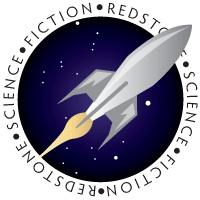






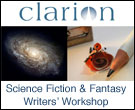



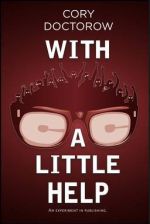
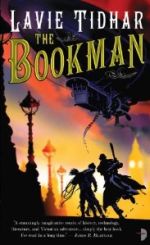
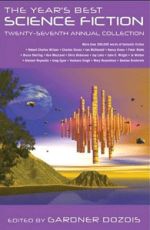
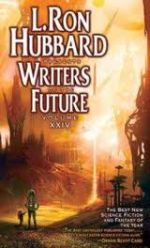
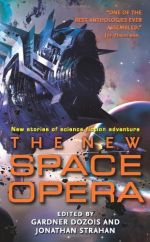
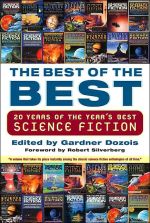
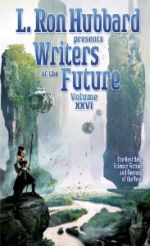
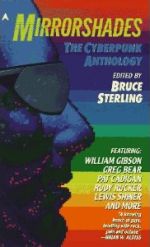
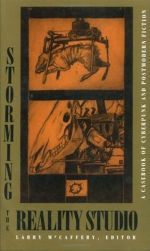

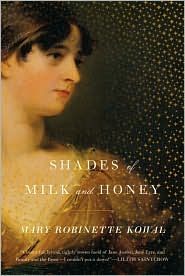

3 comments
[…] our fiction and the interview with our new author, we have another excellent essay by Henry Cribbs, Sci-Fi in the ‘Teens: What can the new decade learn from the past three?. He examines the stories Gardner Dozois chose for The Best of the Best: 20 Years of the […]
[…] spending December devouring Best of the Best, (see this column in RSF#8), I tried to tackle another of Gardner Dozois’s tomes which I received as a holiday gift, his […]
[…] over the course of several months. He has examined the themes of in ’80′s cyberpunk, considered the decades covered in Gardner Dozois ‘Best of the Best’ Anthology, focused on the theme of memory in the 1985 Dozois anthology, and now this month he’s […]